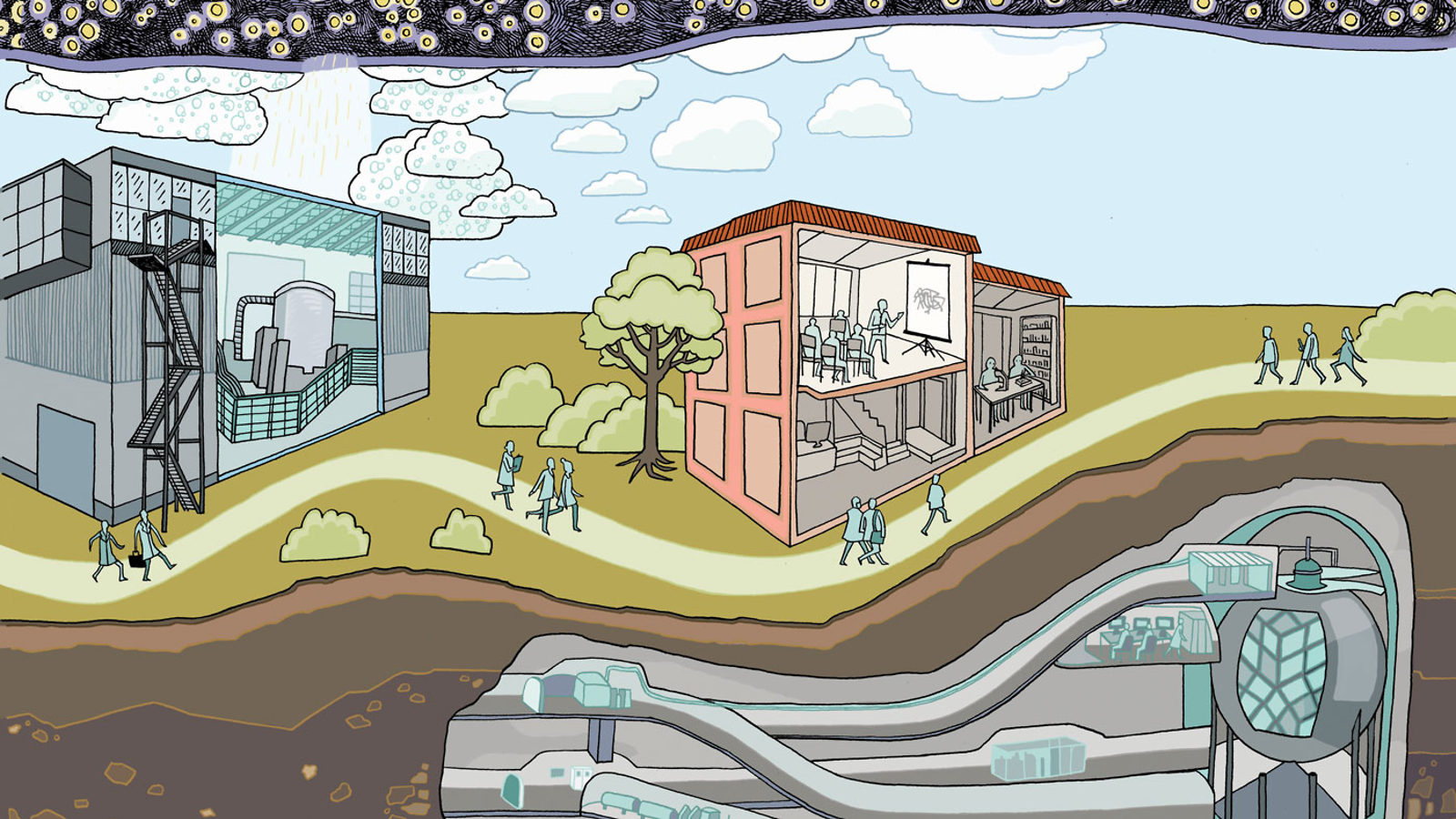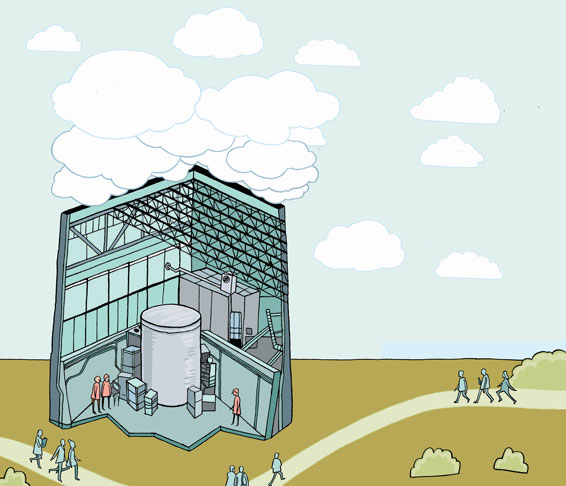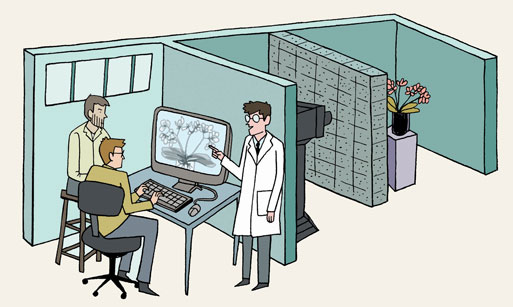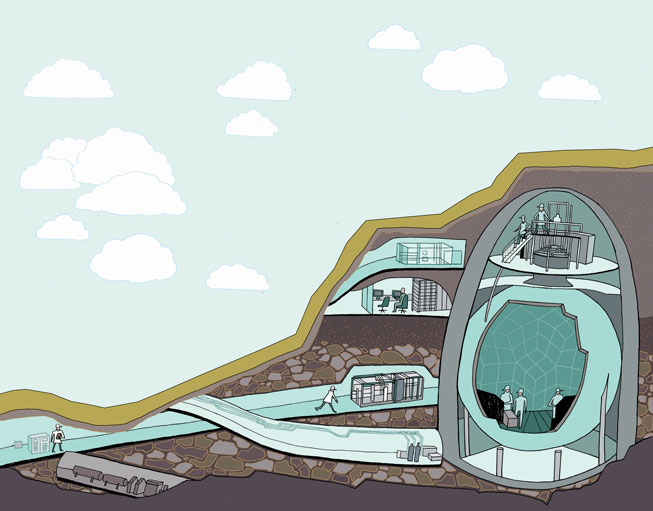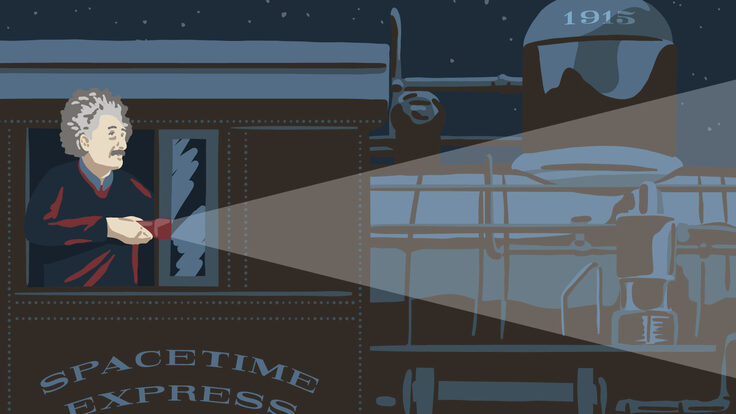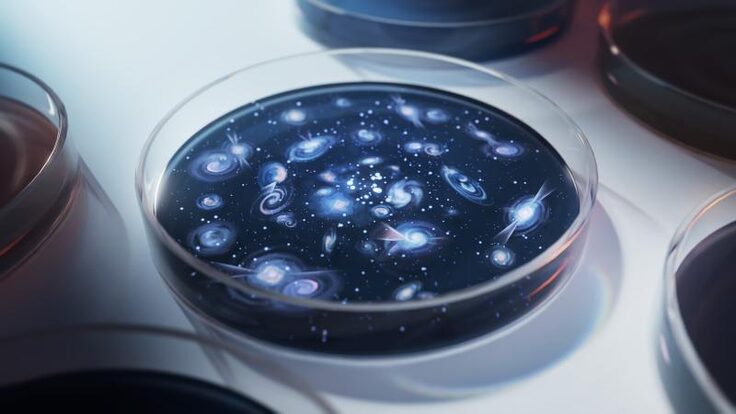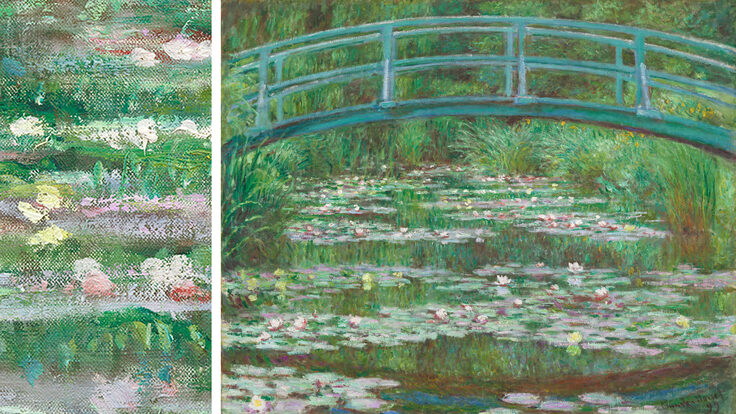When particle physics and other fields of science meet, interesting things happen. Cosmic rays are put to use studying cloud formation. A particle detector tackles questions about aircraft engineering. Invisible particles offer clues about the interior of the Earth.
All researchers are trying to understand how the world works; they just go about it in different ways. Through interdisciplinary projects, scientists from different backgrounds can offer one another new technology, techniques and perspectives.
Researchers Jasper Kirkby of CERN, Anton Tremsin of the University of California, Berkeley, and Bill McDonough of the University of Maryland have all reached out to forge unique connections with other researchers, pursuing diverse goals with tools from particle physics.
Understanding climate with cosmic rays
Jasper Kirkby is an experimental particle physicist who’s worked on several big accelerator experiments at SLAC National Accelerator Laboratory and CERN since 1972.
Nearly 20 years ago, he heard a talk about cosmic rays and cloud formation. Cloud formation is a key component of climate models because clouds scatter sunlight, providing a cooling effect in the atmosphere. As Kirkby learned at the talk, cloud formation seemed to correlate with the appearance of cosmic rays, high-energy particles—mostly protons—that rain on the Earth from space.
Clouds form when water condenses around aerosol particles, tiny liquid or solid particles suspended in the air. It was speculated that cosmic rays ionizing atmospheric vapors could help these cloud seeds to form. However, both aerosol particle formation and atmospheric vapors are poorly understood.
After the talk, Kirkby wrote a paper about how this process could be investigated under controlled conditions in the laboratory using an ultra-clean atmospheric chamber and a proton beam to simulate the cosmic rays. He called the proposed chamber CLOUD, for Cosmics Leaving Outdoor Droplets. Kirkby then went on a roadshow around Europe to discuss his ideas with the atmospheric community, starting at University of Berne in May 1998.
“With interdisciplinary ideas, you really stick your neck out,” Kirkby says. “And I did not want to do this unless the atmospheric community thought it was a good idea.”
Kirkby picked up collaborators along the way and formed what he calls a “dream team” for the CLOUD experiment. “There is a mixing of scientific cultures and techniques that can be very powerful,” Kirkby says. “No one person has all the answers, but each individual brings in novel ideas and expertise.”
Members of Kirkby’s team are able to introduce trace amounts of different vapors at the part-per-trillion level into the CLOUD chamber. They use measurements of the actual atmosphere to determine which mixtures to test. “We can isolate precisely what vapors are important and quantify how they interact under different conditions,” Kirkby says, “but we need the field measurements to narrow down the choices.”
The CLOUD team now consists of 80 scientists from 17 different institutions in nine countries. They receive funding from CERN, a variety of other organizations in Europe and Russia, and the National Science Foundation. The collaboration has published several papers in Nature and Science that have established the main vapors responsible for formation of cloud seeds.
Getting started was difficult, though, Kirkby says, because funding for cross-disciplinary projects can be difficult to secure. “You fall between the cracks of traditional funding agencies,” he says. “Interdisciplinary research can be a high-risk venture, like a start-up. It’s not for the faint-hearted. But you have the possibility to make disruptive scientific advances.”
One tool for many scientists
Sometimes, instead of a research puzzle, you have a tool just waiting for a new problem to solve.
Anton Tremsin, a researcher at the Space Science Laboratory at UC Berkeley, works with Timepix, a chip that rapidly collects and digitizes signals from particles. The chip is based on technology initially developed to measure particles in accelerator experiments at CERN.
Timepix chips can be used in neutron imaging, which works somewhat like X-ray imaging. In an X-ray image on film, areas with the highest density or the heaviest elements—for example, the bones or teeth in an X-ray of a body—look the brightest. Dense areas contain the most electrons, which interact with the X-rays and stop them from passing through to leave their mark on the film.
Neutrons, however, interact with the nuclei of atoms. So a neutron image can be more nuanced than an X-ray image. It can distinguish between many types of materials, each of which affects the neutrons in a different way. Neutron imaging can reveal the different organs inside a horsefly, show the concentration of hydrogen in a metal or find a flower growing behind a granite wall.
Today, Timepix is used to test the stability of aircraft, to examine ancient Japanese swords and to evaluate meteorite samples, among other diverse projects.
“It’s been so variable in terms of applications,” Tremsin says. “I couldn’t even predict how Timepix might be used in the future.”
The collaboration involved in developing Timepix is large, with dozens of groups actively using the technology. With funding from NASA, NSF and the Department of Energy, Tremsin works with two Timepix chips he built at UC Berkeley and later installed at Rutherford Appleton Laboratory in Oxfordshire, England, and at Oak Ridge National Laboratory in Tennessee. Both of these labs are hubs for neutron imaging.
A colleague at Oak Ridge National Laboratory put Tremsin in contact with Yan Gao, a senior scientist at GE Global Research in Schenectady, New York. Gao uses Timepix to evaluate turbine blades used for aircraft engines and generators.
The two researchers have now been working together for more than a year.
“It’s been a fruitful and active collaboration,” Gao says. “Anton not only has scientific talent, but he’s also persistent in trying to use his detector to solve real-world problems.”
The blades for aircraft engines must be made of a material that can withstand stress under high temperatures, Gao says. “To develop such a material, you need to understand the microstructure,” he says. “And to do this type of imaging well, you need a detector with high resolution like Timepix.”
Gao often works with researchers at universities and national labs. He says frequent communication with a wide range of scientists is key to ensuring that people with useful tools meet people with interesting research questions.
Tremsin has also paired up with Ed Perfect, professor of earth and planetary sciences at the University of Tennessee.
For Perfect, the allure of Timepix is its ability to monitor changes over time. He uses Timepix chips to look at the ways hydrogen-rich liquids such as water and oil travel through different earth materials. Understanding this movement is important for a broad range of processes, including hydraulic fracturing and enhanced oil recovery.
To study the flow of fluid through sandstone and shale, Perfect brings water into contact with the base of fractured rock cores at Oak Ridge’s CG-1D neutron imaging beam line. The water is drawn into the fracture zone upon contact. Perfect says he has been surprised by how quickly fluids can move through these porous media.
“With the imaging from this detector, we are able to capture dynamic processes we’ve not really seen before,” Perfect says. “In fact, I’m still scratching my head about how to interpret the observations, because it’s not explained by our traditional theory.”
Although its list of applications is already quite long, Tremsin still thinks there are more ways to use Timepix. “We’re still trying to demonstrate what can be done and what can be measured,” he says. “I hope there will be many more new applications.”
Using neutrinos to discover what's beneath our feet
Bill McDonough, professor of geology at the University of Maryland, first connected with particle physics when he was asked to review a paper submitted to Nature in 2005. The paper announced the detection of geoneutrinos—neutrinos emitted during the radioactive decay of uranium and thorium in the Earth’s interior—by the KamLAND experiment in Japan.
McDonough had never been asked to serve as a reviewer for a particle physics publication. He was intrigued, in part because a decade earlier he had written a paper about the estimated abundance of different elements, including uranium, in the Earth’s interior.
“Like others, I made a hypothesis, but I never thought we’d be able to measure how much uranium is inside the Earth,” McDonough says.
The KamLAND geoneutrinos result wound up making the cover of Nature. “The first detection of geoneutrinos from beneath our feet is a landmark result,” McDonough wrote in the introduction to the article. “It will allow better estimation of the abundances and distributions of radioactive elements in the Earth, and of the Earth's overall heat budget.”
Of all the elements, three—uranium, thorium and potassium—produce over 99 percent of the heat from one of the two sources of Earth’s interior energy, radioactive decay. The other source is primordial energy, kinetic energy leftover from the formation of the Earth and its core.
Earth’s interior energy powers a long list of big processes on the Earth’s surface: plate tectonics, the formation and movement of new oceanic crust; subduction, the movement of an oceanic plate beneath the crust and inside the Earth; convection, the stirring of the mantle; and also the creation of the magnetosphere through convection in the liquid outer core.
After the Nature paper was published, one of the authors, John Learned, a professor and member of the high-energy physics group at the University of Hawaii, called McDonough to discuss working together to measure the Earth’s energy budget with geoneutrinos.
“Since then, we’ve been trading information at a high rate,” Learned says. “Bill has given us the data and geological models we need to predict the neutrino flux.”
There are ways to measure the heat coming out of the planet. But before geoneutrinos, it was difficult to know its source. “As a chemist, I would like to take the Earth, dissolve it in a beaker and then analyze it and tell you exactly what its composition is,” McDonough says. “There are of course consequences to dissolving the Earth.”
McDonough receives most of his funding from NSF. But geoneutrino studies are a truly a global effort, with currently operating detectors in Japan and Italy, one coming online soon in Canada and another planned in China. Learned and McDonough are working together to plan a detector, to be constructed in Hawaii, that can be moved around on the ocean floor.
“We help each other understand the other’s field,” McDonough says. “We all have a high level of curiosity and drive to answer these questions.”
It takes years to get results from geoneutrino experiments. The detector in Japan sees about one geoneutrino every month, and the detector in Italy one every two to three months. But all the while, scientists are learning.
“We know less about the center of the Earth than we do about the sun,” Learned says. “We do not understand what’s beneath our feet, except for a few kilometers down. Neutrinos give us a chance to probe.”
When sciences meet
Researchers are using particle physics technology to understand some of the biggest processes on the planet and to observe its tiniest and most inaccessible nooks and crannies.
The partnerships forged to do this research can bring new energy as new ideas flow, Kirkby says. “Scientists tend to get specialized, but you get a chance to break away from that,” he says.
“And it’s a lot of fun to learn so much new stuff.” When scientists get creative, it creates opportunities for better science, with exciting results.



